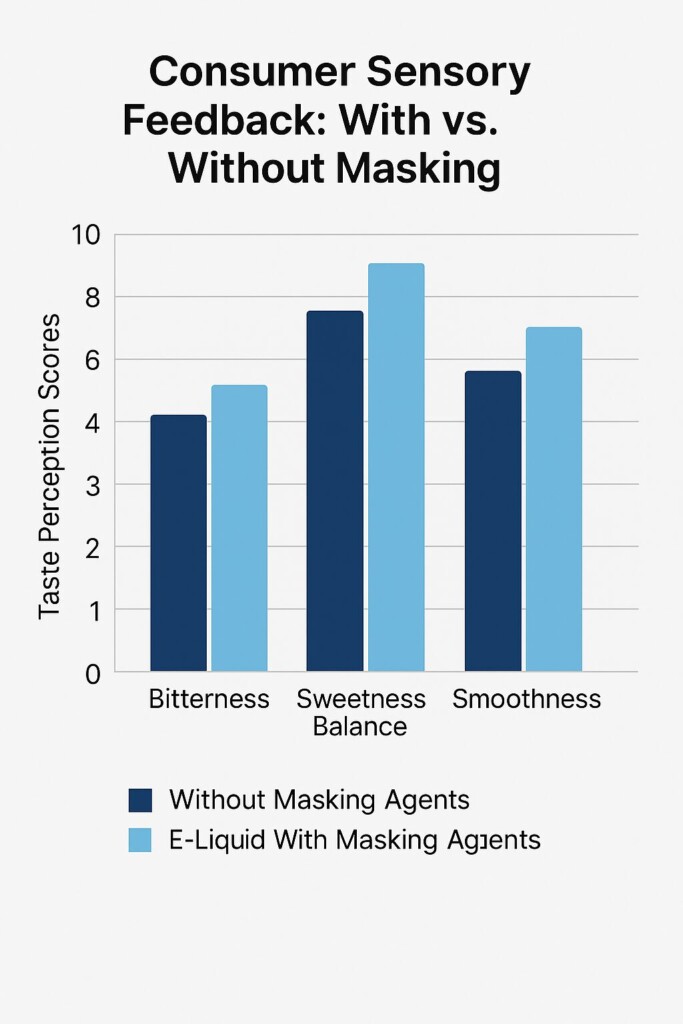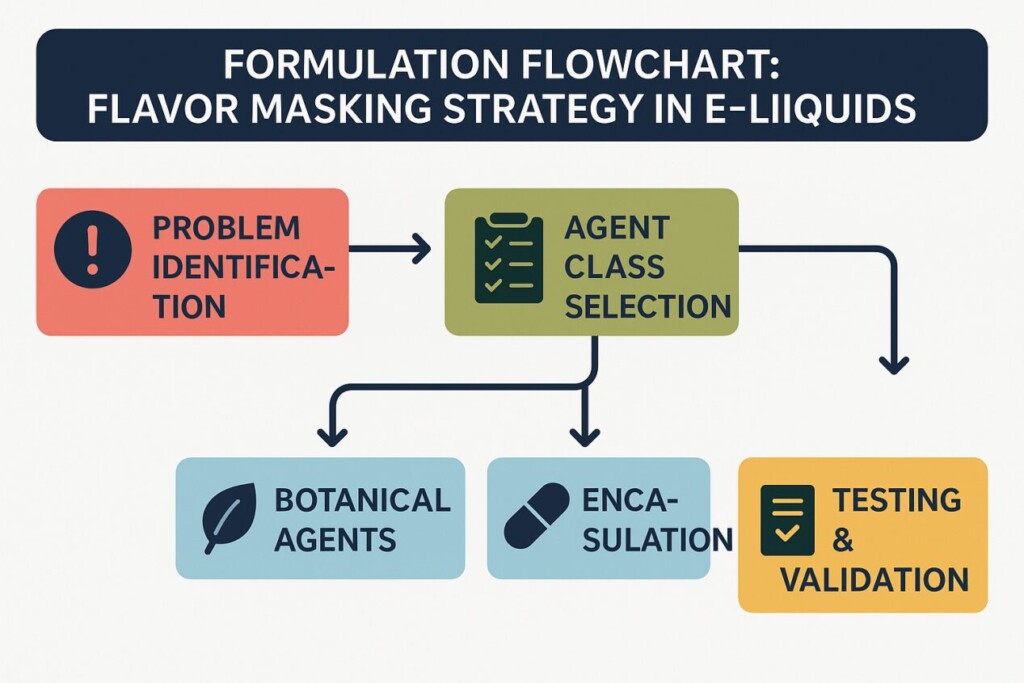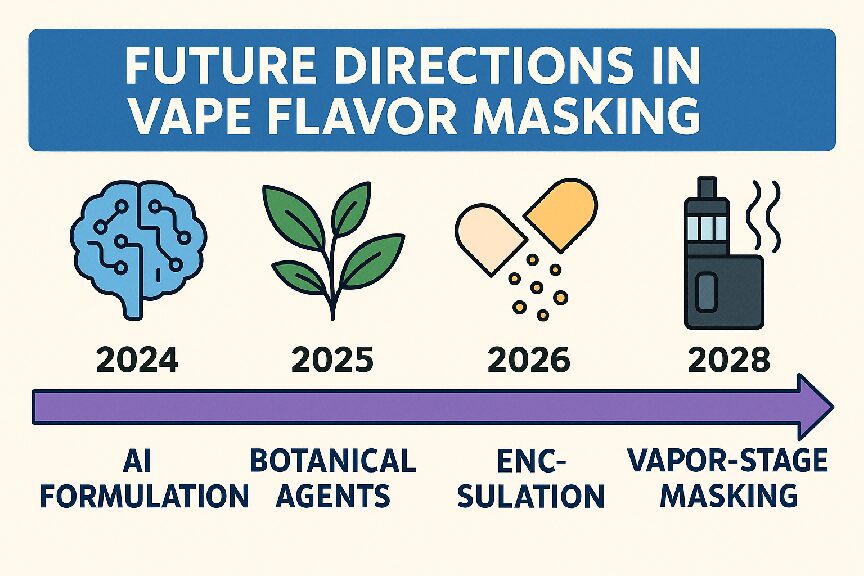In the competitive world of e-liquids, the pursuit of bold, delightful flavor profiles often takes center stage. But behind every successful flavor lies a subtle, often overlooked component: flavor masking agents. These ingredients do not contribute to taste in the traditional sense — instead, they remove, obscure, or modulate undesirable sensory elements such as bitterness, harshness, chemical aftertastes, or an unbalanced mouthfeel.
With modern e-liquid formulations using a wide variety of synthetic and natural compounds, masking agents have become indispensable tools for ensuring a smoother, more enjoyable vaping experience. Their importance is magnified in high-nicotine products, where throat harshness and bitterness are more pronounced.

Key Challenges in Vaping Flavor Perception
Flavor masking refers to the process of reducing or eliminating specific sensory notes that are perceived as unpleasant. In e-liquids, this includes:
From a sensory science standpoint, masking can occur via several mechanisms:
Insight: Masking is not just about covering up — it’s about reshaping the sensory narrative of the vape.
Effective masking requires a smart combination of ingredients tailored to the compound(s) being masked. Below are the primary classes used in vape flavor systems:
Flavor masking agents don’t just suppress flaws — they elevate the perceived quality of e-liquids:
A 2024 consumer study found that e-liquids containing optimized masking agents received 23% higher overall enjoyment scores and 31% lower reported harshness in blind taste tests.

Consumer Sensory Feedback: With vs. Without Masking
Creating a balanced vape profile using masking agents requires careful formulation strategy. Below is a structured approach:

Formulation Flowchart: Flavor Masking Strategy in E-liquids
Masking agents used in vape products must adhere to both safety and transparency standards:
Tip: Always keep documentation of masking agent identity, purity, supplier specification, and inclusion rates for regulatory submissions.
Flavor masking is a delicate craft that requires both technical insight and formulation experience. Brands are encouraged to partner with suppliers who:
One such supplier is CUIGUAI Flavoring, which offers e-liquid flavor solutions engineered for not only intense, vibrant profiles but also optimized masking performance. Their product lines include customized masking systems for tobacco, fruit, and dessert profiles, particularly in high-nicotine or clean-label formats.
Emerging trends are likely to reshape how flavor masking is integrated in next-gen vape products:

Future Directions in Vape Flavor Masking
Flavor masking agents may be invisible to the naked eye and neutral on the tongue — but their impact on consumer experience is anything but minor. From taming bitterness to crafting smooth, lingering mouthfeels, these tools are essential for vape brands seeking both sensory excellence and market differentiation.
Whether you’re developing salt nics, sub-ohm e-liquids, or hybrid formats, a smart masking strategy can mean the difference between shelf success and user rejection.
Don’t overlook the forgotten ingredient — embrace it.
Tags: vape flavor masking, bitterness suppression, e-liquid mouthfeel, CUIGUAI Flavoring, smooth vape design
Author: R&D Team, CUIGUAI Flavoring
Published by: Guangdong Unique Flavor Co., Ltd.
Last Updated: Jun 5, 2025
The business scope includes licensed projects: food additive production. General projects: sales of food additives; manufacturing of daily chemical products; sales of daily chemical products; technical services, technology development, technical consultation, technology exchange, technology transfer, and technology promotion; biological feed research and development; industrial enzyme preparation research and development; cosmetics wholesale; domestic trading agency; sales of sanitary products and disposable medical supplies; retail of kitchenware, sanitary ware and daily sundries; sales of daily necessities; food sales (only sales of pre-packaged food).
Copyright ©Guangdong Unique Flavor Co., Ltd.All Rights Reserved. Privacy Policy